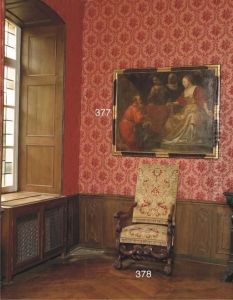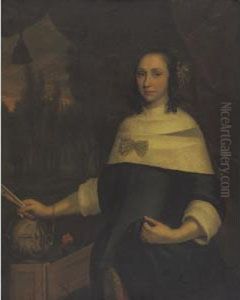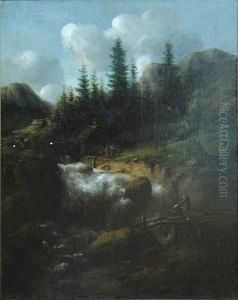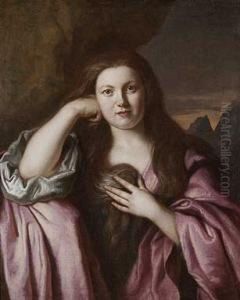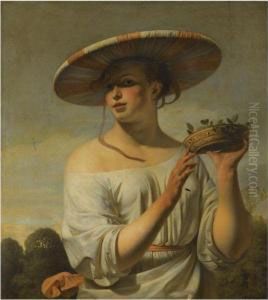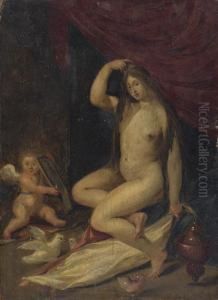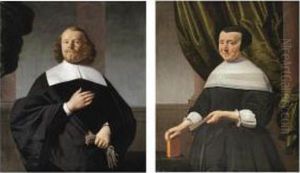Caesar Boetius Van Everdingen Paintings
Caesar Boetius van Everdingen was a Dutch Golden Age painter known for his classical and mythological scenes, as well as his portraiture and historical paintings. He was born in Alkmaar, the Netherlands, in either 1616 or 1617, into a family that would become well-regarded in the Dutch art world. His brother, Allart van Everdingen, was also a painter, recognized for his landscapes and etchings.
Caesar received his early training in Utrecht, where he was influenced by the works of the Utrecht Caravaggisti, painters who were inspired by the style of Caravaggio. However, his style evolved as he incorporated the influence of the Haarlem school and developed a preference for a bright palette and smooth finish that was characteristic of the Dutch classicists. He became a master in the Alkmaar painters' guild in 1634 and spent most of his life working there, with occasional trips to nearby cities for commissions.
Van Everdingen's work is distinguished by his skillful depiction of fabrics and textures, as well as his graceful handling of light and shadow. His mythological scenes, such as 'Allegory of the Dutch Victory over the Spanish Fleet in 1639' and 'Four Muses and Pegasus on Parnassus', demonstrate his ability to convey complex narratives through composition and detail. These works were often large in scale, befitting their grand subjects and the stately homes they were designed to decorate.
Noted for his versatility, Van Everdingen also completed important decorative work for public buildings, such as the Oranjezaal in Huis ten Bosch Palace in The Hague. His work there, alongside other prominent Dutch painters, contributed to one of the most significant decorative projects of the period. Caesar Boetius van Everdingen's paintings were sought after by the Dutch elite, as his classical subjects and refined technique were well suited to their tastes.
Van Everdingen died in his hometown of Alkmaar in 1678. His legacy rests on his contribution to the Dutch classicist movement and his ability to bring mythological and historical themes to life with a quintessentially Dutch sensibility. His works can be found in numerous museums across the Netherlands and beyond, where they continue to be appreciated for their elegance and craftsmanship.
